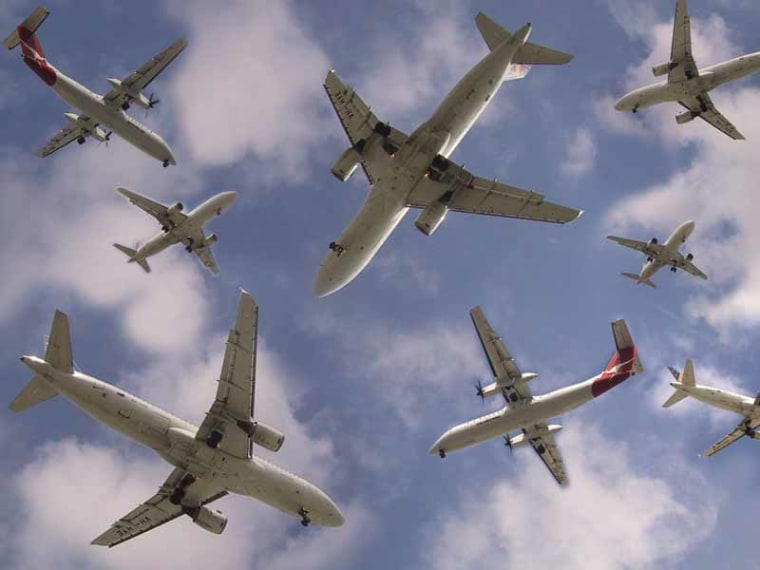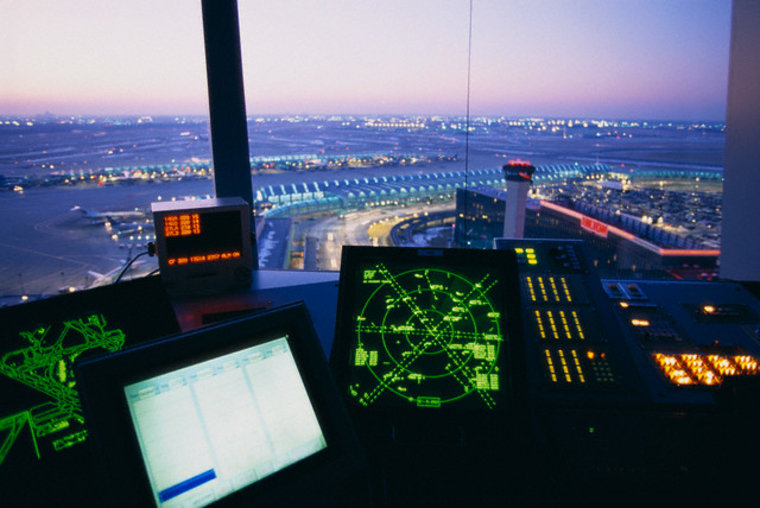Commercial airliner crashes are extremely rare. But any time a major crash occurs, stories of heartache and personal tragedy that accompany the technical explanations can spike the flying public’s fear factor.
Yet every year, airplanes are involved in hundreds of near-misses — on the ground and in the air — that get little or no media coverage. These barely averted disasters are just as frightening as the big stories; it’s just that the air traffic controllers involved don’t share their incidents publicly.
At any given moment over U.S. territory, some 5,000 airplanes are being directed by air traffic controllers in a carefully choreographed ballet with an all-important endgame — keeping ‘targets,’ as air traffic controllers refer to airplanes, safely apart.
There are around 15,000 air traffic controllers working in the U.S. today. And the Federal Aviation Administration (FAA) expects another 17,000 new air traffic controllers to enter the workforce over the next decade.
“Air traffic controllers manage 50,000 flights a day over U.S. territory, about 660 million passengers a year,” says Tammy Jones, a spokesperson with the FAA. But that doesn't mean that control towers are overwhelmed — that's just a normal day in the life of a controller. “We have one of the safest systems. And we have the most complex system in the world,” says Jones, “The controllers have to be very efficient at what they do, and they are.”
As of early June 2009, the FAA reported an overall reduction of operational errors as compared to the same period during 2008 (operational errors refer to instances when airplanes violate standard safety distances from objects or terrain, among other factors). But Doug Church, spokesman for the National Air Traffic Controllers Association (NATCA), warns that an influx of inexperienced trainees and new hires in the system has left holes that compromise safety.
“If you broke down the percentage of trainees to the total workforce, about 24 percent (of air traffic controllers currently on the job) are in training,” says Church, “And this has a direct impact on safety because you’re losing experienced people who are the most seasoned to be able to safely control your flight.”
Many veteran air traffic controllers have opted for early retirement over recent years due to dissatisfactory work rules and salary freezes imposed by the FAA, says Church. The result is that the recent serious incidents — like the one that occurred at the Memphis radar center, which has control of the air space over Bowling Green, Ky. — Church says can be attributed to a lack of experience.
On April 29, 2009, an American Airlines jet in a holding pattern and a Pinnacle Airlines commuter jet passing through the same air space came within one mile (less than 20 seconds) of hitting each other at 32,000 feet in the skies over Bowling Green. The emergency warning systems activated in both planes, and the pilots were forced to take evasive maneuvers to avoid disaster.
The air traffic controller working the situation was a trainee who had become distracted, according to Ron Carpenter, Memphis president of NATCA.

“The controller had just cleared another aircraft out of holding, and he was trying to put the route of that airplane into the computer, but the computer wasn’t accepting it. He was distracted trying to get that accomplished. And we’re still not sure how the other airplanes (the American Airlines jet and the Pinnacle Airlines jet) got on the same altitude.”
“The American Airlines pilot started his descent but then had to rapidly go back up (to avoid hitting the Pinnacle jet), and he barely had enough speed to start climbing,” says Carpenter, “The American Airlines jet was flying at holding speed (slower than cruising speed), and because he made these rapid maneuvers he almost stalled out and fell out of the sky.”
“We have a computer that can rebuild the whole situation. We watched it in 3D and it scared me to death,” Carpenter says, “I was shaking after watching it, and it was just a replay—it scared me that much.”
And while the human implications of their jobs are ever present, controllers don’t necessarily view every blip on their radar screens as representing the lives within.

“We don’t go to work thinking ‘Uncle Joe and Aunt Marge are on this plane’—that’s just not the way we think,” says Stephen Abraham, a veteran air traffic controller at JFK Airport’s tower, who has his own near-miss stories from New York’s busiest airport. “We don’t look at the targets as tubes carrying lots of passengers with lots of life stories; it’s a moving inanimate object.”
That said, Abraham is adamant that safety is always the number one commitment. “The only thing we think about is keeping airplanes safely away from each other,” he says.
But with so many veteran controllers retiring early and the ensuing influx of brand new people working the tower at JFK Airport, Abraham warns, safety is being compromised. “All the experienced people have been doing for three years has been training [the new controllers],” he says—an effect that wears out the people doing the training.
“At my airport, for the first time in my career, the margin of safety has deteriorated to the point where I’ll say a serious incident—it could be an accident—is not going to surprise me,” says Abraham. “I think it’s only a matter of time.”
